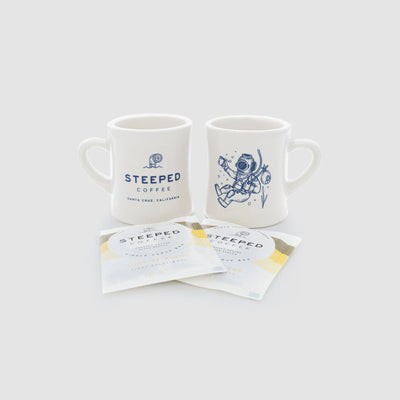The Controversy Over Coffee Pods
Full original article can be found on USA Today by Dalvin Brown.
Like many Americans, 29-year-old Tiffany Mooney uses a single-serving beverage brewing system to produce her daily cup of coffee.
She loads the at-home brewer in the morning with a pint-sized plastic coffee capsule and within minutes her hot drink is ready. Around lunchtime, she pops in a plastic-encased Cappuccino-flavored brew to keep her going.
And right before bed, the Hanceville, Alabama, resident opts for a "relaxing" hot chocolate flavor.
"That thing is my life," Mooney said about her Walmart-brand coffee maker. "But I know that tossing the empty little cups in the garbage after I use them isn't the most environmentally friendly thing to do."
She's right.
They’re small, convenient and filled with every flavor imaginable.
For some, they're pricey to buy. Others purchase them in bulk by the dozen. Regardless of how or where you buy the 2-by-2-inch pods, these modern-day coffee containers increasingly contribute to the mountain of plastic that's ending up in landfills.
"Coffee pods are one of the best examples of unnecessary single-use plastics that are polluting our planet," said John Hocevar, the campaign director of Greenpeace USA, an environmental nonprofit organization. "Many end up getting incinerated, dumping poison into our air, water and our soil."
Coffee pods can wind up in rivers where they wash into lakes and oceans. Over time, the plastic breaks down into smaller pieces that choke and kill wildlife, Hocevar said.
Whether K-Cups, or Nespresso Capsules, or other brands, coffee pods are generally small plastic or aluminum containers with aluminum foil lids that can create one cup of coffee with the press of a button. Despite being substantially more expensive per pound than regular coffee brewed in a pot, they’ve been the go-to solution for caffeine addicts who need a quick fix since the '90s.

Coffee pods surrounded by other groceries. Photo: Jackson Ruckar
But the big boom happened around 2012, according to the National Coffee Association (NCA). In 2012, about 10 percent of coffee consumers brewed using this method, and the percentage increased each year since.
By 2018, the number of users more than doubled. Today, 41 percent of Americans own a single-cup coffee maker, according to NCA and Statista, a market research firm.
Front and center at supermarkets, drugstores and select dollar chains nationwide, popular brands include Keurig Green Mountain, Starbucks, Folger Coffee Co. and Kraft Heinz Co.
Keurig, Inc. launched its K-Cups for the home in 2004, after growing popularity in the office market. Within 10 years, enough K-Cups were sold that if placed end-to-end, they would circle the globe 10 times, Hocevar said.
A Keurig spokesperson said the company sold 10.5 billion K-Cups for the fiscal year ending in September 2015, which is the last year public data was available, the Chicago Tribune notes. Keurig went private after a $13.9 billion buyout by JAB Holding Co. in 2016.
That same year, some cities around the globe began banning K-Cups entirely, due to the product's recycle-resistant nature. In Hamburg, Germany, coffee pods were banned from state-run buildings as part of an environmental movement.
Even the creator of the K-Cup has stopped using them out of guilt, saying that he “feels bad sometimes” about the product's wasteful impact, according to the Atlantic.

Part of the problem with recycling tiny coffee pods stems from traceability.
The capsules are often too small for some sorting systems at recycling plants to pick up. Also, recycling centers can be overwhelmed with mountains of trash, so sifting through a mound of garbage for tiny capsules isn't always efficient.
"K-cups bog down the entire waste management system," Hocevar said. "They make things more expensive to recycle that would otherwise be easy and inexpensive such as aluminum cans."
There's a petition on KillTheKCup.org to help bring attention to the growing waste produced by K-Cups.
